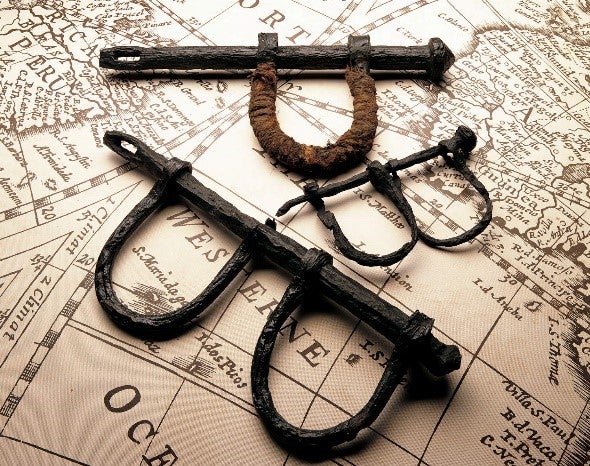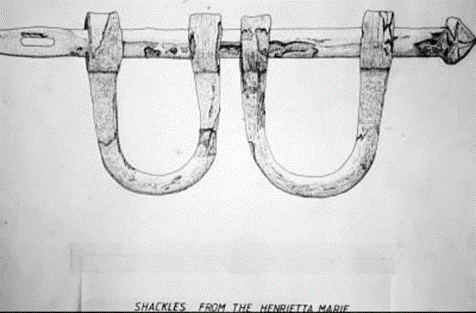
FIGURE 1. Shackles recovered from Henrietta Marie
Henrietta Marie joined the slave trade in 1697, regularly carrying human cargo from West Africa to the Caribbean. Sailing for England in 1700, the ship ran aground on a coral reef west of the Florida Keys. The wreck went unnoticed for 270 years. In 1972, the Armada Research Corporation, a private shipwreck salvage operation owned by Mel Fisher, looking for the remains of Nuestra Señora de Atocha, located what is left of Henrietta Marie.
From MFMHS’s excavation of the site in the 1980s, nearly ninety separate sets of shackles varying in size and design have been recovered.The majority of the shackle loops vary in width from medium (7.6–11.4 cm) to large (11.4–15.2 cm). The larger shackles were presumably designed for adults, while the remains of smaller shackles indicate the presence of children and juveniles on the vessel (See FIGURE 1). The forelocks, small iron wedges designed to lock the loops on the shackles (see FIGURE 2), were present on several of the shackle bolts.

FIGURE 1. Drawing of recovered shackles
No complete slave ship has ever been discovered in the Americas, and only a few, such as Henrietta Marie, have been identified. Henrietta Marie presents historians and archaeologists with a representative example of a late seventeenth century slave ship. As such, the wreck sheds light on the African slave trade and serves as a means of comparison for past and future discoveries. Henrietta Marie is a reminder of the cost of international development and how brutality can be integrated into global trade, economics, culture, and history.
Images courtesy of the Mel Fisher Maritime Museum, Key West, Florida
Mel Fisher Maritime Heritage Society
2007 The Wreck of the Henrietta Marie: A Prospectus for the Exhibition Tour. MFMHS, Key West, Florida.
Moore, D.D., and C. Malcolm
2008 Seventeenth-Century Vehicle of the Middle Passage: Archaeological and Historical Investigations on the Henrietta Marie Shipwreck Site. International Journal of Historical Archaeology 20:20-38.
